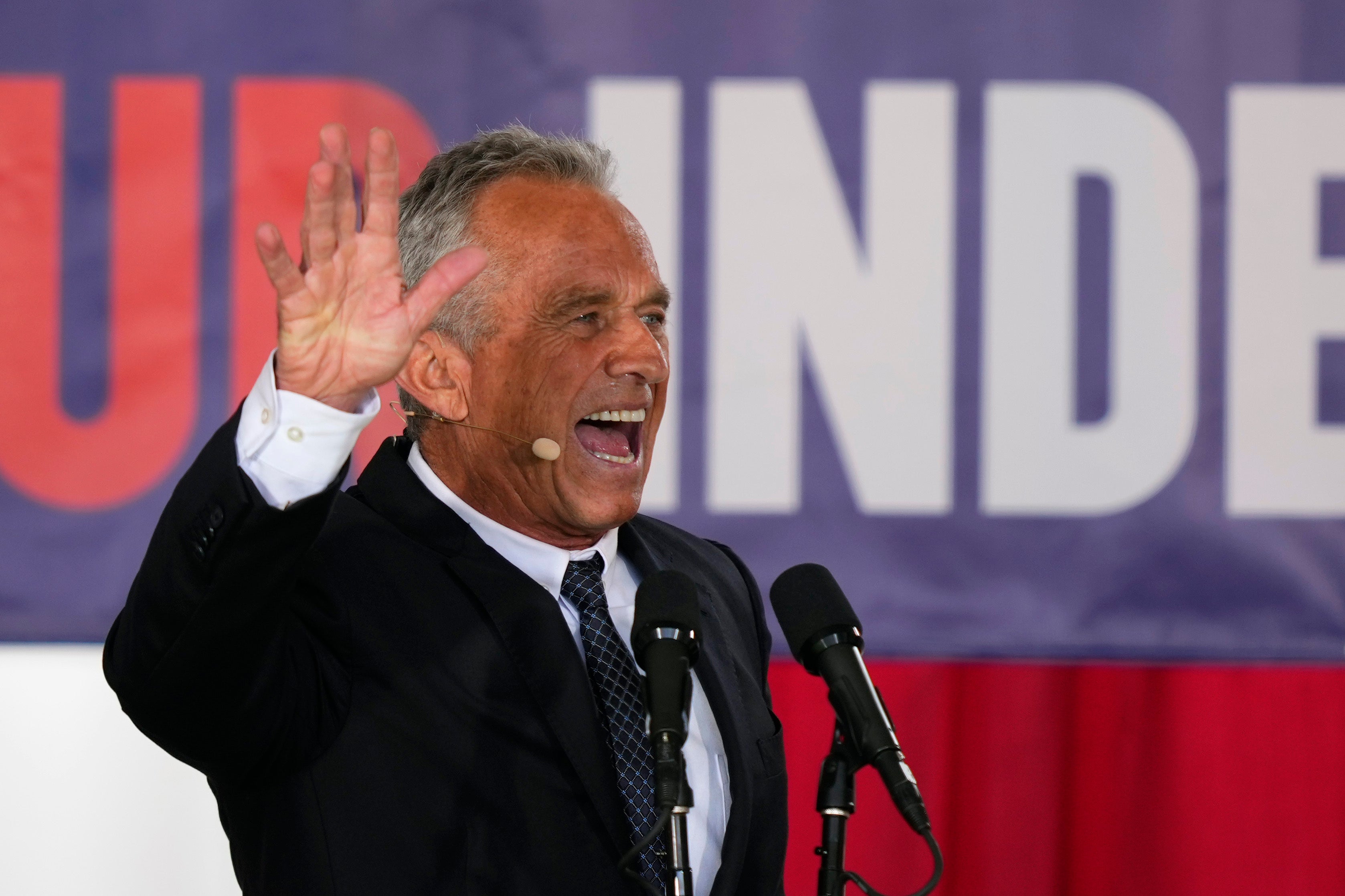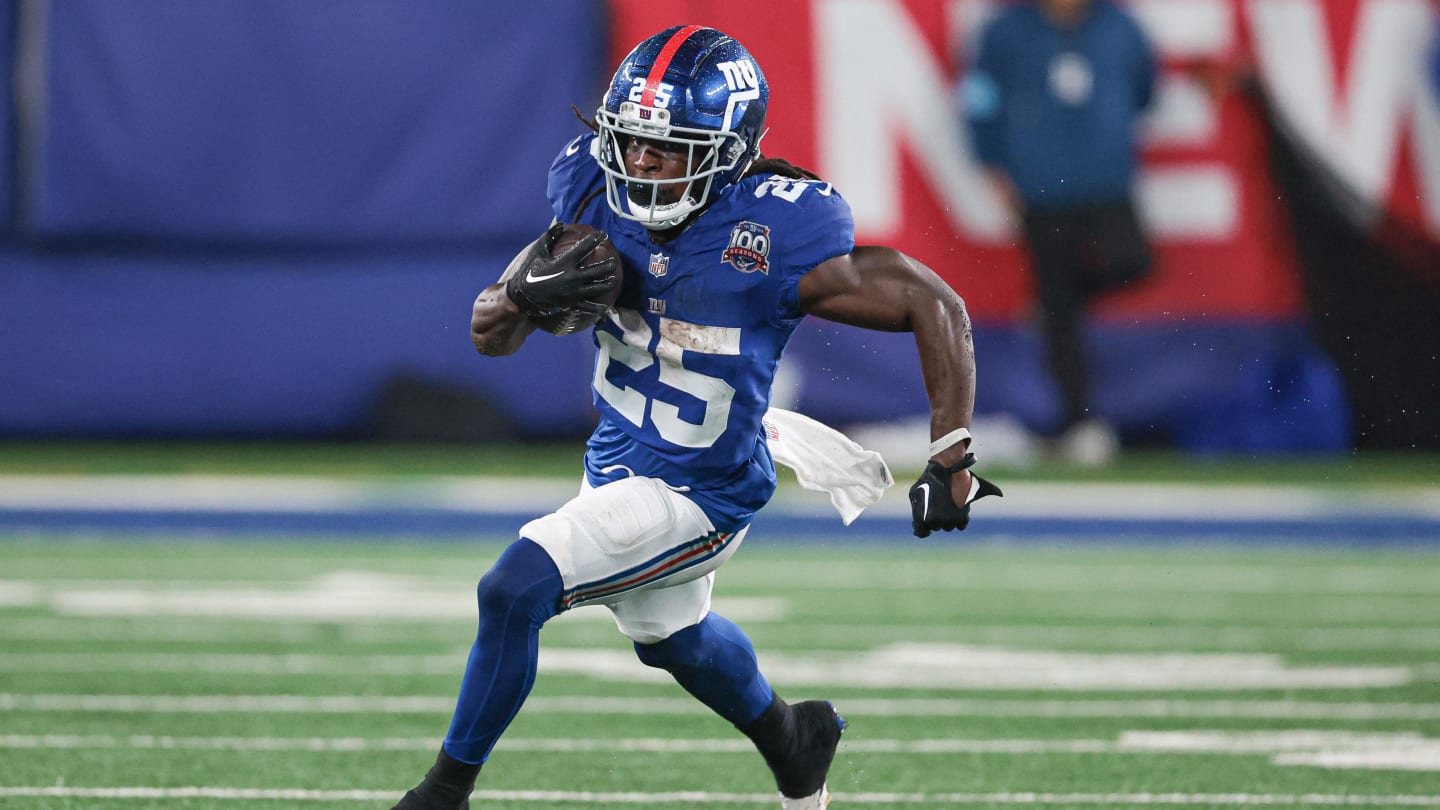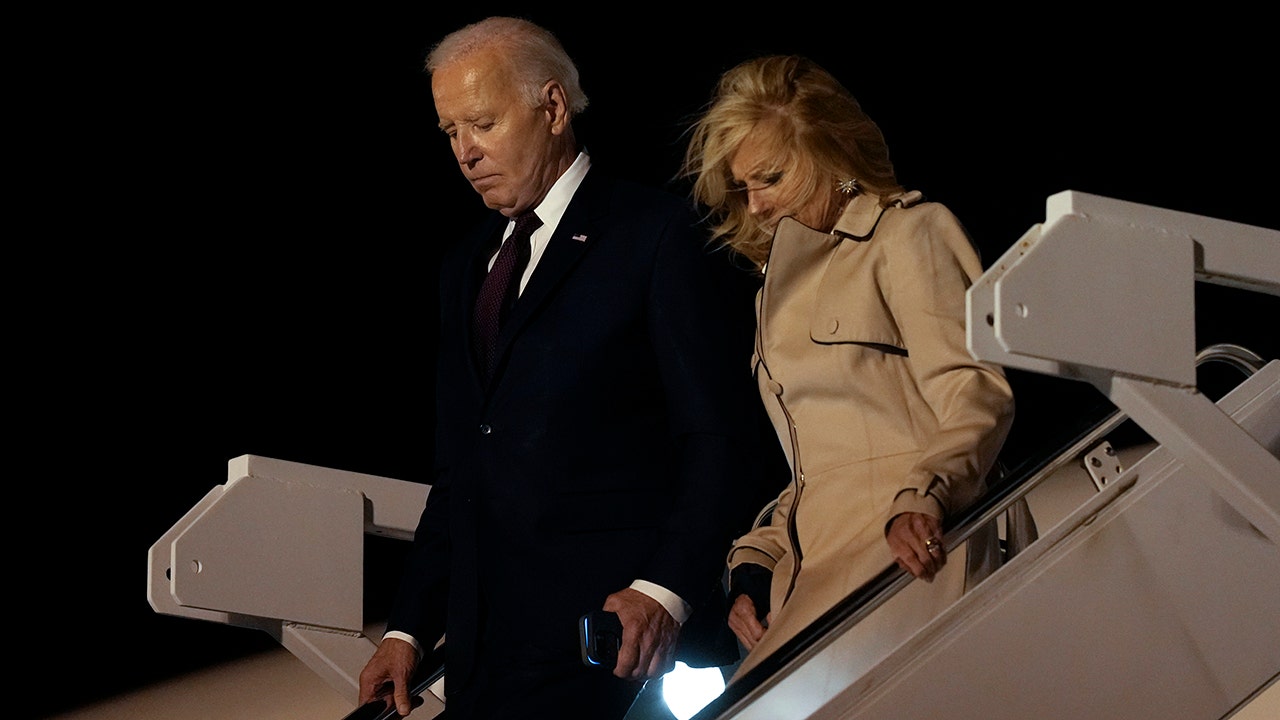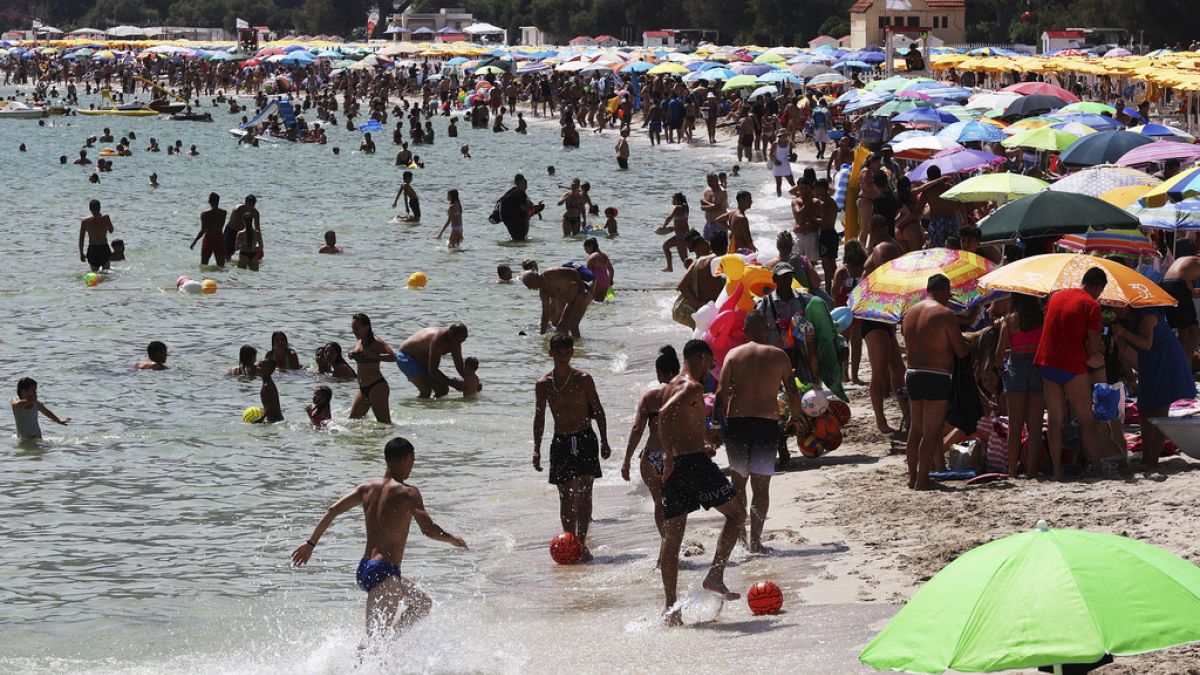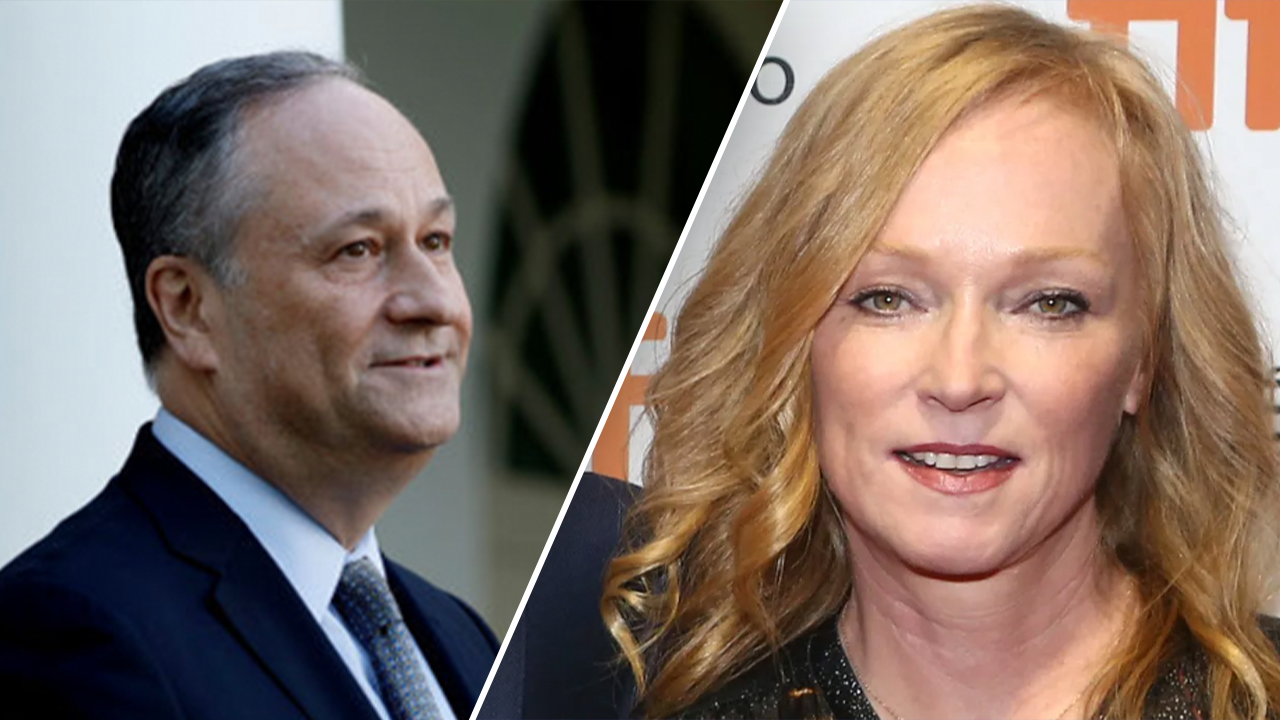Sports
‘An unforgettable experience.’ Jack Flaherty’s full-circle journey back to Dodger Stadium
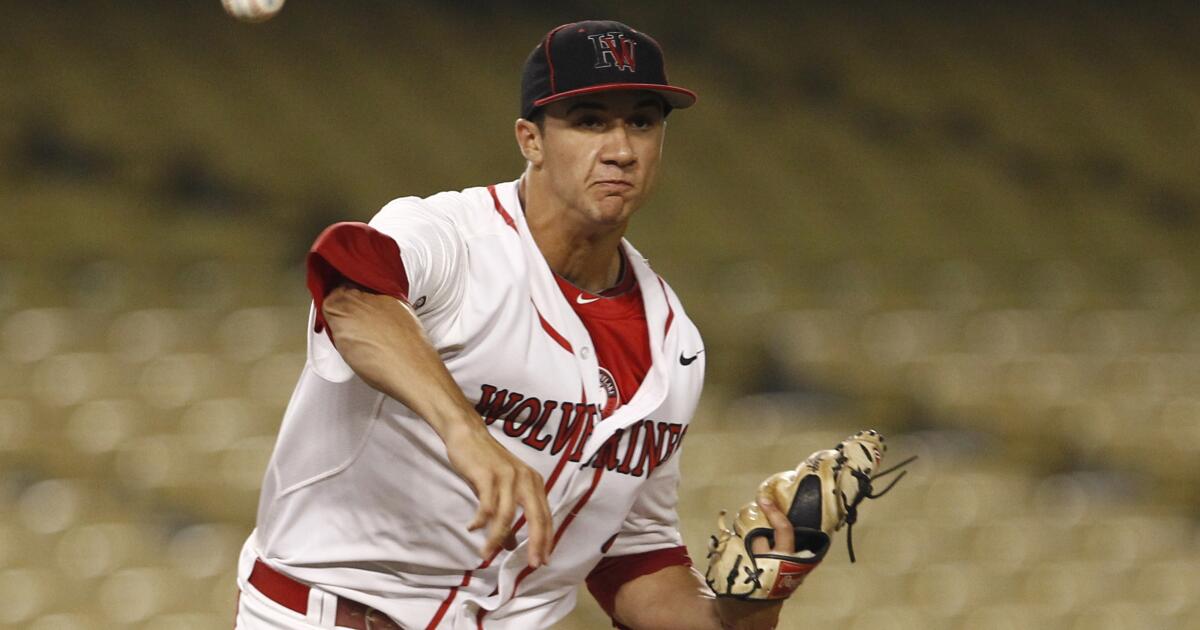
Even before he learned how to walk, Dodger Stadium has been part of Jack Flaherty’s origin story.
It’s where the new Dodgers pitcher first visited at 6 months old, and would return frequently alongside his mom, Eileen, sometimes as often as 20 games per year.
It’s where his early love for the game was planted and nurtured, putting him on a path to the big leagues that first began in Sherman Oaks Little League.
It’s also where — before becoming a first-round draft pick, one-time Cy Young Award contender, and resurgent veteran pitcher acquired by the Dodgers in a blockbuster trade last week — Flaherty produced one of the brightest glimpses into his big-league destiny.
On May 31, 2013, in the CIF Southern Section Division I championship game with his Harvard-Westlake high school team, he pitched a shutout while driving in his side’s lone run in a title-clinching 1-0 win.
“That day,” former Harvard-Westlake coach Matt LaCour said, “kind of exemplified who he was.”
Tyler Urbach (17) and catcher Arden Pabst (7) rush pitcher Jack Flaherty (9) after winning the Southern Section Division 1 championship at Dodger Stadium on May 31, 2013.
(Patrick T. Fallon / For The Times)
In some ways, it was the start of a journey that will come full-circle Friday, when Flaherty — whose 8-5 record and 2.80 ERA make him one of the most important pitchers on the Dodgers starting staff — will make his much-anticipated home debut.
“I’ll have to probably take a breath and gather myself,” Eileen Flaherty said this week. “Because, he’s been there before, but now he has a Dodger uniform on.”
Flaherty’s future first became clear when he arrived at Harvard-Westlake’s Studio City campus, quickly making an impression on the school’s burgeoning baseball program.
“He was kind of touted as, ‘Oh, we have this incoming freshman who is super athletic,’” said Boston Red Sox pitcher Lucas Giolito, a fellow Harvard-Westlake product who was two years ahead of Flaherty in school. “He was like, varsity-as-a-freshman type of talent.”
Only, early on, Flaherty’s most obvious talents weren’t on the mound.
While the right-handed pitcher had sharp command and decent — though hardly overpowering — velocity as an underclassman, his tools as an infielder initially looked more promising.
“Everyone thought he would be a position player,” noted Harvard-Westlake’s then-pitching coach Ethan Katz (who has gone on to become the Chicago White Sox’s major-league pitching coach).
“He was gonna be the shortstop for the next four years,” Giolito said.
In Flaherty’s sophomore season, however, two things changed.
First, Katz helped Flaherty develop his now-signature slider, watching in amazement as the teenager quickly honed the pitch.
“I would tell him every day at practice, ‘Pitching first. Make sure you come down and see me,’” Katz recalled this week. “When he developed his slider sophomore year, that’s when he really took off.”
Then, when Giolito (the team’s senior ace and a potential No. 1 overall draft pick) blew out his elbow earlier in the year, Flaherty was elevated in Harvard-Westlake’s rotation, emerging as a reliable sidekick to another future MLB star, current Atlanta Braves pitcher Max Fried.
“That was kind of the beginning right there,” Giolito said of watching Flaherty that season. “It was like, this guy is a good hitter and a good infielder, but there’s something special about what he’s doing on the mound.”
With Giolito and Fried in the pros as first-round picks in 2013, Flaherty’s profile as a pitcher only continued to explode. He added life to his fastball. He put more bite on his slider. And he began to refine his mental approach, shifting more of his focus primarily to the mound.
“I get my work ethic from my mom, but also from the way that we worked [at Harvard-Westlake],” Flaherty said. “The way we went about our business, the way that we worked, the way we stayed after [practice]. Everything was detail-oriented.”
In that environment, Flaherty flourished.
In his junior year, he went 13-0 with a 0.63 ERA, earning National Player of the Year honors from Maxpreps while helping lead Harvard-Westlake to the CIF Southern Section Division 1 title game.
The added bonus: The final is annually played at Dodger Stadium.
“We obviously wanted to play for a CIF Championship,” Flaherty said this week, sitting on a railing of the Dodger Stadium dugout. “But we knew, with that, came being able to play here, which was just an unforgettable experience.”
Indeed, 11 years later, Flaherty and those close to him still remember the day vividly.
In the morning, the pitcher struggled to focus on his finals in school. “I don’t think I did well on them,” he joked.
As the team took a bus to the game, Eileen and other parents gathered for a meal, superstitiously repeating their outfits from each of the team’s previous playoff games. “I wore a pink shirt, like, the whole time,” she laughed.
Minutes before first pitch, though, Flaherty sat in the dugout with a quiet confidence, seemingly unfazed by a crowd of several thousand around him.
“You see it in championship games all the time,” LaCour said. “A lot of guys at that age, when the crowd gets loud, big environments, they kind of fall apart. But there was no fall apart in Jack. You knew what you were gonna get. You knew he was gonna execute and attack.”
Attack, Flaherty did, racking up eight strikeouts, giving up just six hits and escaping jams in both the third inning (leaving the bases loaded) and the seventh (when his left fielder threw out a runner at home plate).
“That’s game over,” LaCour thought to himself after the seventh-inning play at the plate. With Flaherty on the mound, “that ain’t happening again.”
By that point, Flaherty’s bat had also given Harvard-Westlake a 1-0 lead, driving in the game’s only run on a full-count single in the third.
“I was in Florida rehabbing from Tommy John [surgery], and I watched a live stream on my laptop,” said Giolito, who’d been drafted by the Washington Nationals the previous year. “I was fist-pumping and cheering. My roommate was like, ‘What the hell are you doing?’”
Full pandemonium followed the final out, which not only clinched a Southern Section title for Harvard-Westlake, but also a National No. 1 ranking from both Perfect Game and Baseball America.
“Four or five years before he got there, that program was a team that won like two games a year,” Katz said. “For the program, it was significant. It put Harvard-Westlake on a bigger map.”
Same went for Flaherty, who surged up draft boards during an equally dominant senior season in 2014 (he finished his high school career on a 23-game winning streak as a pitcher), before being drafted 34th overall by the Cardinals, giving Harvard-Westlake three first-round pitchers in three years.
“My time there was very instrumental,” Flaherty said this week. “Just in the way I continue to go about my business.”
Friday won’t be Flaherty’s first trip back to Dodger Stadium since. In his breakout 2018 season with St. Louis, he struck out 10 in a six-inning, one-run start. As a Cy Young candidate the following year, he spun seven scoreless innings while fanning 10 again.
Flaherty’s most recent trip was less memorable, a five-run clunker last April amid a career-worst season.
But this year, the veteran pitcher has regained his old, familiar dominance, leading him on a nostalgic road back to Chavez Ravine.
“It was in the back of everybody’s mind that the Dodgers would be buyers and the Tigers would be sellers, and hey wouldn’t that be cool,” said LaCour, who is now Harvard-Westlake’s athletic director. “So I think everybody’s looking forward to this weekend, and see him wear the white uniform at the stadium.”

Sports
Quincy Wilson gets a humbling taste of the Olympics — but it's just the beginning

SAINT-DENIS, France — For the first time since the spotlight began shining on the phenom from Bullis School in Maryland, Quincy Wilson wasn’t smiling. The infectious charm that made him so beloved these last couple of months was replaced with a stern countenance.
Wilson ran the first leg for the U.S. in the first round of the men’s 4×400 relay in Friday’s early session. Responsible for setting the tone, he ran his lap in 47.27 seconds — seventh-best in the eight-man field. And the kid was not happy about it.
Three weeks ago, after becoming a sensation at the U.S. Olympic trials, Wilson set a new personal best, running the 400 meters in 44.20 seconds at the Holloway Pro Classic in Gainesville, Fla. He wasn’t close to that at Stade de France.
“It was amazing,” Wilson said, his million-watt smile noticeably absent. “Was out there with a great team who was on my side through the whole thing. I wasn’t 100 percent myself, but a team came out here and did it for me.”
When asked about the context of not being 100 percent himself, he politely declined to answer. No excuses.
But he doesn’t need one. Wilson might be the only one disappointed.
The Americans recovered and qualified for the final round. No harm was done. The U.S. can still repeat as champions in the final on Saturday.
Wilson, in all likelihood, will be replaced for the final round. That was surely always the plan since the United States has elite options in the single-lap discipline.
Quincy Hall just won the gold medal in the men’s 400 meters. If he’s healthy and has the legs, he’s a virtual lock. Same with Rai Benjamin, who goes for gold in the men’s 400-meter hurdles in Friday night’s finale. Benjamin is a relay legend who has an Olympic gold (Tokyo) and two World Championship golds in the 4×400 relay.
“Tomorrow is going to be better,” relay teammate Vernon Norwood said. “I guarantee you.”
Wilson’s significance was so much less about his time and so much more about his presence. He made history becoming the youngest male to appear in an Olympics for America.
Norwood said he got so caught up in the moment, watching this 16-year-old make Olympic history, he had to snap himself back into focus for the handoff.
16-year-old Quincy Wilson makes his Olympic debut and becomes the youngest male track & field athlete to compete for the United States at the Olympics. 🇺🇸 #ParisOlympics
📺 USA Network & Peacock pic.twitter.com/XJ4HudX0Dx
— NBC Olympics & Paralympics (@NBCOlympics) August 9, 2024
“I’m super proud of him, to come out here and show his grit for us, for the United States,” Norwood said. He added, “It’s wonderful. I told him before we walked out. I said, ‘Hey, embrace it. You belong here. This is a privilege. Nobody in this world will get this opportunity, so make the most of it.’”
What’s more, these Paris Games have seen USA Track and Field re-established its dominance, and Wilson is one of the marquee prospects for the nation’s bright future in the sport.
Clearly, he was put on this relay team for that reality. The coaches chose to build up Wilson, getting him some valuable experience ahead of Los Angeles 2028, instead of rewarding another runner whose best days are behind him. Wilson is being groomed to be a successful Olympian.
“Absolutely!” women’s hurdler Masai Russell — who also attended Bullis and is close with Wilson — said when asked if she was proud of him. “When he was super sad that he didn’t make the (4×400 mixed) relay I was like, ‘You know, you’re 16. People would die to be in your shoes. … Some people who run track their whole life never made the team. … And I’m glad that he got the opportunity to run just so he could get the feel of this atmosphere. Because it’s pretty intense. So I know when he comes back, it’ll be a completely different story.”
Wilson wasn’t trying to hear any of that in the immediacy of 47.27.
And perhaps that’s the best thing to come out of his Olympic debut. The young fella wasn’t appeased by merely being here. If he needed any more motivation, he got it by being humbled on the Olympic stage.
“He’s a competitor,” Russell said. “Men are just competitive in general. But he is super competitive. Like we were playing (air) hockey together, and I was like, ‘Oh. … He don’t play no games.’ … I lost by, like, five.”
You just know Wilson — with his entire family in the crowd and his whole world in Maryland watching — had designs on doing something special in his first-ever Olympic appearance. He’s been watching everyone else compete, make history, waiting for a chance to do so himself. He seems to do so every time he steps on the track. He’s already set three under-18 records this season.
After he made American track & field history, 16-year-old Quincy Wilson’s competitors showed him love after the race. ❤️ #ParisOlympics pic.twitter.com/lXfg0jJYnd
— NBC Olympics & Paralympics (@NBCOlympics) August 9, 2024
But for the first time since the larger sports world learned the name Quincy Wilson, he looked like a 16-year-old on the track running against grown men.
He shot out of the blocks in Lane 4 and held his ground through the first 200 meters. But it looked as if he went too hard, perhaps governed by the adrenaline and excitement of a debut on the biggest stage of his life.
The youngster started to die out on the second turn and was struggling down the backstretch. The strength and experience he still needs was evident as he was sixth heading into the final stretch. Fatigue had his form out of whack as Poland’s 20-year-old Maksymilian Szwed passed Wilson easily. The only runner with a worse time in the heat was Renny Quow of Trinidad and Tobago.
Making matters worse, Botswana made a switch and put Letsile Tebogo, the new 200-meter champion, in the first leg. He ran blazing fast, smoking the field to give his nation the lead and speeding up the pace in the process.
Wilson gave it all he had, though. Exhausted, and no doubt embarrassed, he nearly came to a complete stop before handing off the baton.
Fortunately for the U.S., Wilson had some grown men behind him. And a crowd pulling for him.
“They got me around the track today,” he said. “My grit and determination got me around the track. I knew I had a great three legs behind me, and I knew it wasn’t just myself today. If it was just myself, we’d be in last place.”
Norwood immediately made up ground with a monster second leg, gradually getting faster and getting America up with the rest of the pack. His 43.54 seconds was the fastest of any leg in the first round, edging out Great Britain’s star quarter-miler, Matthew Hudson-Smith, who ran 43.87. They were the only two under 44 seconds.
Then Bryce Deadmon took the baton from Norwood and surged America two spots to fourth after the first turn. Deadmon posted the fastest third leg and got the U.S. on the heels of third place. Anchor Christopher Bailey still had work to do.
“It’s just going to be motivation for me,” Quincy Wilson said of his Olympic debut, “to give my team a better chance than what they had today.” (Hannah Peters / Getty Images)
With America back in the mix, and Botswana way out front, Bailey was patient at first. Then with about 150 meters remaining, he turned it on and passed up Japan to secure the No. 3 spot and America’s automatic qualifier in the final round.
“That was the plan,” Norwood said. “We put him out front. We didn’t want to give him too much responsibility. So it was my job to pick up as much as I can.”
Wilson’s best hope to stick for the final was to do something special. His frustration from not coming close to it was visceral. His Olympic debut about two to three seconds too long and yet over so fast.
Someday, he’ll benefit from the lessons he learned at Stade de France on Friday. He’ll see this experience as integral to the Olympian he becomes. He might even come away with a medal, as preliminary runners are also rewarded, not just the four in the final.
But in the moment, Wilson looked much more angry than appreciative. What’s inside him, which got him to this grand stage, won’t allow him to so easily set aside his performance. Which explains why he feels like a lock to be back on this stage again.
“It’s just going to be motivation for me,” Wilson said, “to give my team a better chance than what they had today.”

GO DEEPER
For Quincy Wilson, teenage track prodigy, everything’s different now — Olympics or not
(Top photo of Quincy Wilson running in Friday’s 4×400-meter relay: Christian Petersen / Getty Images)
Sports
Hall of Fame golfer Juan 'Chi Chi' Rodriguez dies at 88
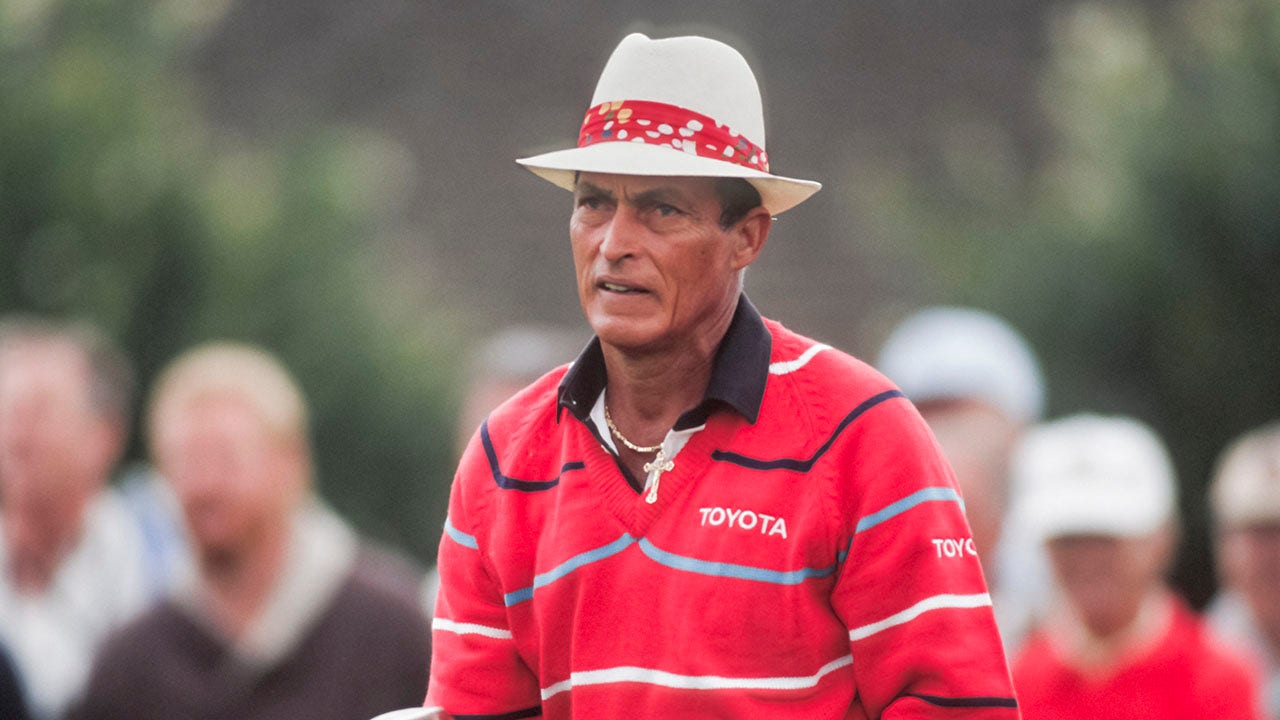
Juan “Chi Chi” Rodriguez, a Hall of Fame golfer, died on Thursday at age 88.
Rodriguez’s death was announced by Carmelo Javier Ríos, a senator in Rodriguez’s native Puerto Rico. No cause of death was provided.
No one from Puerto Rico had ever made it to the PGA Tour, and Rodriguez was not only determined to get there, but to beat the best.
Juan Antonio “Chi-Chi” Rodríguez of Puerto Rico competed in the 1990 Transamerica Senior Golf Championship event of the Senior PGA Tour on October 21, 1990, at the Silverado Country Club in Napa, California. (David Madison/Getty Images)
“They told me I was a hound dreaming about pork chops.” He once told Sports Illustrated.
Rodriguez learned to play golf by hitting tin cans with a guava tree stick and found work as a caddie. According to a biography provided by the Chi Chi Rodriguez Management Group, he claimed he could shoot a 67 by age 12.
Before joining the PGA Tour in 1960, he served in the U.S. Army from 1955 to 1957. Rodriguez won eight times during his 21-year career and played on one Ryder Cup team.
Following his PGA career, he played on the Champions Tour from 1985-2002 and won 22 times on that tour. His total combined career earnings were more than $7.6 million.
TREVOR LAWRENCE LOST GOLF CLUBS AFTER REFUSING PRIVATE JET DESPITE $275M CONTRACT, JAGUARS COACH SAYS
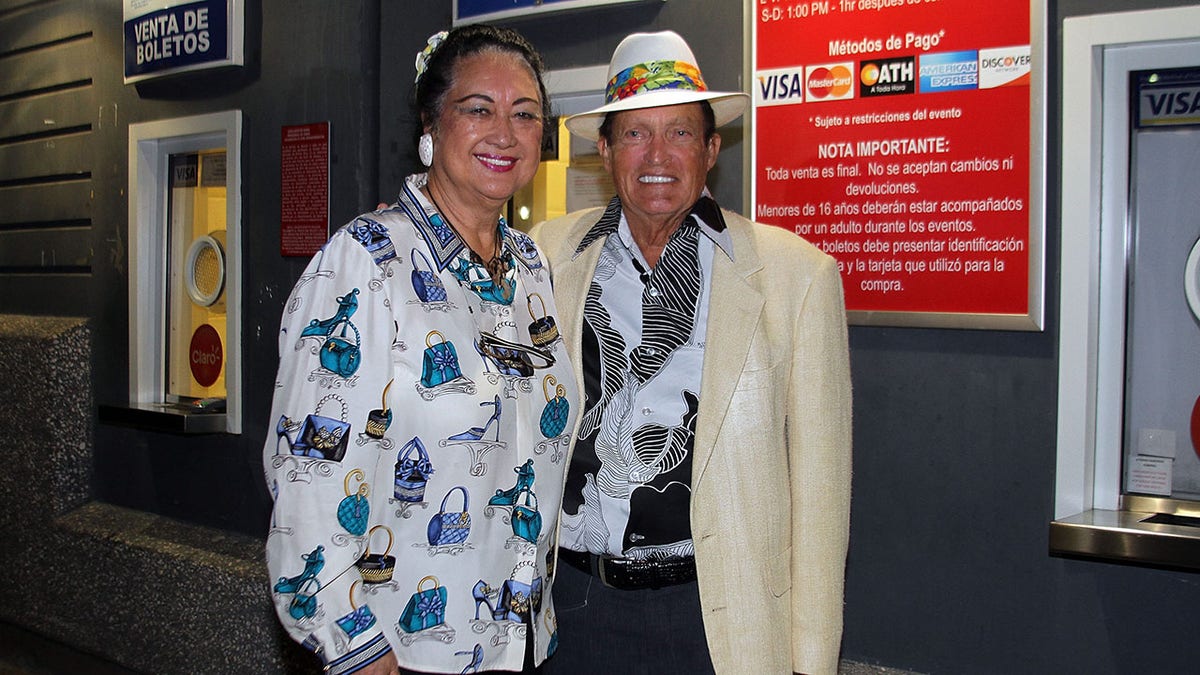
Juan Chi Chi Rodriguez (R) and his wife Iwalani attend Marc Anthony Concert at Coliseo Jose M. Agrelot on September 11, 2015, in San Juan, Puerto Rico. (GV Cruz/WireImage)
He was best known for antics that included twirling his club like a sword, or doing a celebratory dance, often with a shuffling salsa step after making a birdie putt.
He was inducted into the PGA World Golf Hall of Fame in 1992.
“Chi Chi Rodriguez’s passion for charity and outreach was surpassed only by his incredible talent with a golf club in his hand,” PGA Tour Commissioner Jay Monahan said in a statement. “A vibrant, colorful personality both on and off the golf course, he will be missed dearly by the PGA Tour and those whose lives he touched in his mission to give back. The PGA Tour sends its deepest condolences to the entire Rodriguez family during this difficult time.”
BRITISH GOLFER CHARLEY HULL NOT ALLOWED TO SMOKE CIGARETTES DURING OLYMPIC GOLF TOURNAMENT
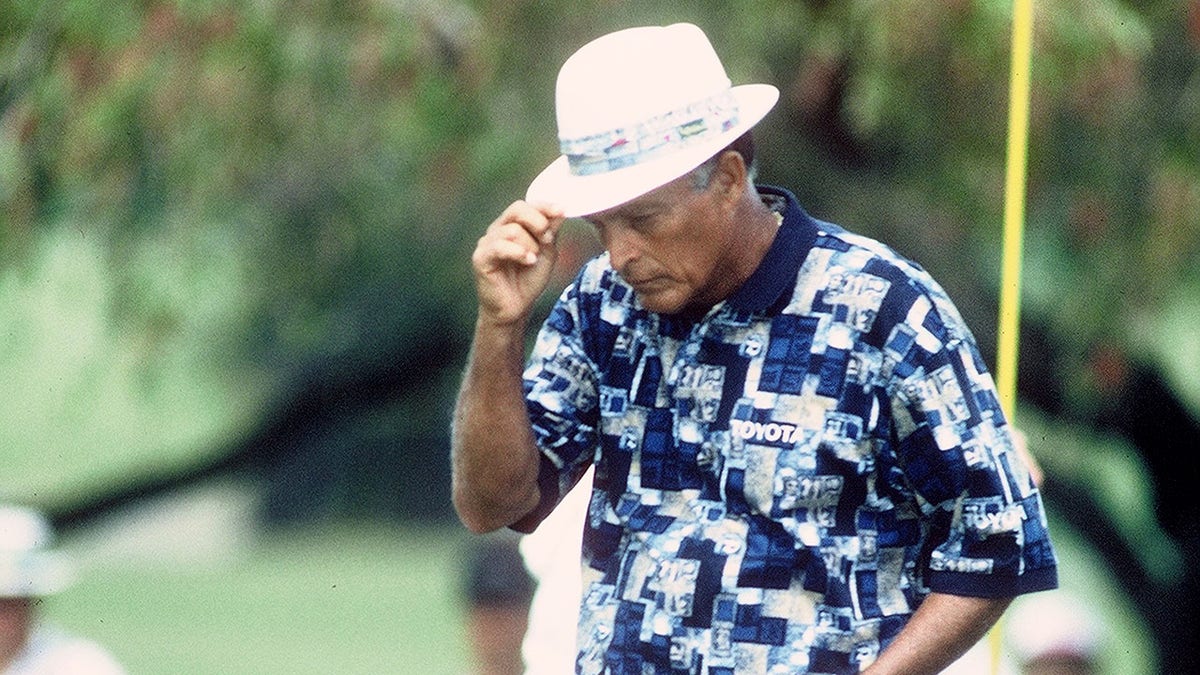
Juan “Chi Chi” Rodriguez does his patented dance after sinking a putt at the U.S. Senior Open in 1996. (Bob Stowell/Getty Images)
Rodriguez started a children’s academy in the Tampa-area with a focus on kids who were at risk. As he got older, he devoted much of his time towards community and charity activities, such as the Chi Chi Rodriguez Youth Foundation.
He had a near-death experience a little over 25 years ago when he was hospitalized in October 1998 after experiencing chest pains. He reluctantly agreed to see a doctor, who told him he was having a heart attack.

Golfer Juan Chi Chi Rodriguez swings and watches the flight of his ball during tournament play circa 1988. (Focus on Sport/Getty Images)
“It scared me for the first time,” Rodriguez recalled in a 1999 interview with The Associated Press. “Jim Anderson (his pilot) drove me to the hospital, and a team of doctors were waiting to operate. If I had waited another 10 minutes, the doctor said I would have needed a heart transplant.
“They call it the widow-maker,” he said. “About 50% of the people who get this kind of heart attack die. So, I beat the odds pretty good.”
In recent years, he spent most of his time in Puerto Rico, where he was a partner in a golf community project that struggled amid the recession and housing crisis, and hosted a talk show on a local radio station for several years.
The Associated Press contributed to this report.
Follow Fox News Digital’s sports coverage on X, and subscribe to the Fox News Sports Huddle newsletter.
Sports
Robinson Cano, at 41, finds joy — and hits — in the Mexican League

MEXICO CITY — One day in late July, Robinson Canó finished a workout and stepped out into a quiet hallway at Alfredo Harp Helú Stadium. He had two hours before his team, the Diablos Rojos del Mexico, would face the Conspiradores de Queretaro in an afternoon matinee, and he had a pregame routine to complete.
He needed to eat. He needed to stretch. And, at some point, he needed to finish an interview about why, at the age of 41, he was here in Mexico City, an eight-time MLB All-Star plying his trade in the Mexican League, where the salary cap is around $475,000 per month for an entire roster of 30 players.
“Cinco minutos,” Canó said, as he headed off to finish another task.
It was Saturday, and it had been a long week. The day before, the Diablos had arrived home from Leon at close to 4 a.m. On Friday night, Canó had collected two hits in an 18-11 victory over Queretaro.
Canó made more than $260 million in his career, including $240 million in a deal signed with the Mariners a decade ago. Were it not for two performance-enhancing drug suspensions, he would likely be a lock for the Hall of Fame. The Mexican League has long been a refuge for minor-league castoffs, four-A players and former major-leaguers with checkered pasts. But it’s rarely, if ever, been a place for a player like Canó.
So you might suspect that Canó spent the summer collecting a (relatively modest) check and serving as a (washed-up) draw for Mexican baseball fans. But that’s not what happened. Instead, Canó arrived this spring and immediately became the best hitter in the league, leading the Diablos — Mexico’s most storied club — to the best regular season in franchise history.
Canó finished the regular season batting .431, winning the “Champion Bat” for the highest average in the league and setting a new club record — which also tied for the highest average in the Mexican League this century. Meanwhile, the Diablos finished the regular season with a staggering 71-19 record, the highest winning percentage in league history. They entered Thursday with a 2-0 series lead over Puebla in the best-of-seven first round of the playoffs.
Canó’s arrival coincided with a Mexican League season that saw a record number of former big-leaguers thanks to relaxed rules on foreign imports, as well as increasing investment from club owners. (The Diablos also employ Trevor Bauer, the former MLB pitcher who served what amounted to a 194-game suspension for violating the league’s Joint Domestic Violence, Sexual Assault and Child Abuse policy.)
But after months of watching Canó dominate helpless pitchers, transforming into either the Ted Williams of the Mexican League, or perhaps its answer to Lionel Messi, the biggest question seemed to be: Why?
Why was Canó, at 41, grinding like he was back at second base for the New York Yankees — scouting pitchers who peaked at Double A, helping teammates who just want to survive a few more years, pushing himself to play five or six times per week?
“For me, the joy that I have is being able to be on the field,” Canó says. “I love the game. I still have that in me. I want to keep playing. I get a chance here.”
At some point, as his skills faded, his major-league career ended, and he faced his own baseball mortality, Canó considered what he would like to do with all that free time.
He opted for more baseball.
The Mexican Baseball League, or LMB, was founded in 1925. And for most of its existence, it has been a waystation for interesting outsiders. Consider the story of George Brunet, a lefty pitcher who debuted for the A’s in 1956, spent 15 seasons kicking around the majors, and then headed for Mexico in 1973, where he pitched for another 16 years, earned the nickname “El Viejo” (The Old Man), tossed a no-hitter at age 42, and suffered a heart attack in 1981. He returned the next year and won 14 games for Veracruz at age 47.
Or consider James Bell, better known as “Cool Papa,” the Negro Leagues star who batted .437 for Veracruz in 1940, joining a cadre of Black players from the era who were welcomed south of the border.
Then there was the pitcher from the Dominican Republic, who, when his six-game major-league career was over, came to Mexico and enjoyed brief stints with teams in Mexico City and Aguascalientes. José Canó didn’t leave much legacy in Mexico, but he did let his young son swing a bat on the field in Aguascalientes when he came to visit.
Robinson Canó recalled the story of his father one day in February, when club officials from the Diablos were visiting him in Miami and trying to sell him on a summer in Mexico. Canó’s career stateside had been waning since 2020 when, as a member of the Mets, he had tested positive for the anabolic steroid Stanozolol. It was his second violation of MLB’s policy on performance-enhancing drugs, which triggered a year-long suspension in 2021. When he returned to the Mets in 2022, he batted .195 in 12 games before being released.
Canó kicked around with the Padres and Braves, toiling briefly at Triple-A El Paso, before being released for good in August. Not ready to hang up his cleats, he continued to play winter ball in the Dominican and invested in Baseball United, a coming startup league focused on growing the sport in the Middle East and South Asia, which announced a partnership with the Saudi Baseball and Softball Federation in March. But Miguel Ojeda, a former big-league catcher and the Diablos sports director, wanted to offer a completely different pitch.
Considered by some to be the “New York Yankees of Mexico,” the Diablos Rojos play their home games at Alfredo Harp Helu Stadium, a modern ballpark that cost $166 million, opened in 2019 and quickly became the jewel of the league. Tucked between turns of the Autódromo Hermanos Rodríguez — Mexico City’s sprawling Formula One track — the stadium’s white canopy roof can be seen from its surrounding working-class neighborhood. The venue’s namesake is the Diablos’ owner, Harp Helu, a billionaire businessman who is also an investor in the Padres.
Ojeda emphasized to Canó that the Diablos’ home clubhouse was major-league caliber — weight room, sauna, kitchen, chef — and that the team could offer security during his stay. (Most players live at a nearby hotel.) He mentioned the possibility of up to 20 import players, meaning the roster would be filled with players with big-league experience. “It would be a big boom for baseball,” he told Canó.
Ojeda was also honest: The Diablos have more championships than any club in Mexican League history — 16 in total — but their last title was in 2014. Their fans were getting restless.
“We’ve been dominating it during the regular season,” Ojeda said. “We just haven’t been able to win.”
Diablos officials declined to reveal how much they offered Canó, but said that Canó and Bauer were “the best paid players in the history of this team.” One American player, who asked for anonymity because he was not authorized to discuss salaries, said most players with major-league experience were making anywhere from $15,000 to $25,000 per month, while Canó was thought to receive a premium over that. The monthly salary cap for a Mexican League roster is roughly $475,000 — equating to an average salary of just less than $15,000 per month — though Ojeda said the team had exceeded the cap and was paying a luxury tax.
In the end, money wasn’t a sticking point. “He doesn’t need the money,” says Diablos manager Lorenzo Bundy. So when Canó agreed to sign, the Diablos front office and coaching staff emphasized one thing: The team wanted to ensure that Canó was fresh and healthy for the postseason, so they would limit his playing time to three or four games per week.
But then Canó showed up in the spring and met with Bundy.
“I came to win,” Canó said.
Pretty soon, he was batting over .400.
So Bundy put him in the lineup each day.
On a cool night in late July, Canó stepped into the batter’s box in the first inning against Queretaro. The temperature hovered in the high 50s. A mix of reggaeton and American pop music played. A crowd of more than 10,000 fans spun noisemakers, blew into plastic horns and chanted “Vamos Diablos,” creating a near-permanent din.
Canó faced Wilfredo Boscan, a 34-year-old right-hander from Venezuela whose only big-league experience consisted of six appearances for the 2016 Pirates. Canó slapped a single to left field on the first pitch. One inning later, he stepped up again and blooped another single into center.
Canó is a little thicker in the midsection these days, and his hands are slower. But the lefty swing, for the most part, is the same one he possessed during nine seasons with the Yankees.
“He’s got a beautiful swing,” said Pirates manager Derek Shelton, who managed Canó in rookie ball. “It has never changed.”
When Canó was playing for the Gulf Coast League Yankees in 2001, Shelton decided that he was “the smartest baseball player at that age” that he had ever seen. Canó was 18 and flashy, the kind of player who would charge hard for a slow roller and flip the ball behind his back. Shelton was always reminding Canó to use two hands, quoting a phrase he learned from his own father: “Robbie, God gave you two hands for a reason.”
Canó debuted with the Yankees in 2005, in the twilight of a dynasty, and grow into one of the best second baseman in the league. He helped New York win the World Series in 2009, and for a moment seemed like a Yankee lifer. But then came two moments that defined the rest of his career: In 2013, he fired agent Scott Boras, joined Jay-Z’s Roc Nation agency and departed New York for Seattle. And then, five years later, he tested positive for the diuretic furosemide, a banned substance that landed him an 80-game suspension.
Canó would finish his career with 335 home runs and 68.1 Wins Above Replacement, better than Roberto Alomar or Ryne Sandberg, two second basemen who reached the Hall of Fame this century. But that positive test — coupled with a second in 2020 — is likely to mar Canó in the eye of Hall of Fame voters. Canó maintains that he has not given much thought to his own case.
“I never paid too much attention or looked deep into what it takes — what type of numbers or whatever,” he said. “If things happen, great. If not, I’m always going to be thankful for the years that I played. I accomplished a lot of things.”
If Canó’s teammates on the Diablos are curious about his past, it has little to do with controversy. One day this summer, Jimmy Yacabonis, a former big-league lefty, was working out in the weight room with Canó when a song by rapper 50 Cent came on the stereo.
“Hey Robbie,” Yacabonis said, “did you ever meet 50 Cent?”
Canó whipped out his phone and pulled up a photo of him and 50 Cent from his time in New York.
“He’s very down to earth,” Yacabonis said. “For a guy that’s that high profile to be that cool and that laid back around everybody, he’s an awesome teammate, honestly.” Earlier this summer, Canó decided to outfit the team with personalized cleats.
But what really caught his teammates’ eye was his everyday diligence. He studied opposing hitters and doled out tips. He was a presence in the clubhouse. If he made a mistake in the field, he would corner the pitcher for a quick debrief. He maintained a routine just as if he was still playing for the Yankees.
“He’s seen a million games and been part of a million games,” said Diablos pitcher Ryan Meisinger, who last appeared in the majors with the Cubs in 2021. “If he sees something, he lets us know.”
Canó still has a flair for the dramatic. One day after collecting two hits against Queretaro, he ranged to his right at second base and retired former big leaguer Leonys Martin on a nifty side-arm throw, the kind of play he made for years in New York.
Back then, when Canó was starring for the Yankees and Shelton was coaching for Cleveland, the coach received a signed jersey from his former player.
The inscription included one phrase: “God gave you two hands for a reason.”
Robinson Cano was a perennial star with the Yankees, and helped them to a 2009 World Series win, before leaving for Seattle. (Jim McIsaac / Getty Images)
There is a joke inside the Diablos clubhouse that Canó, at age 41, is the greatest hitter in the world.
“It’s like ‘create-a-player’ on (MLB) The Show,” Meisinger says.
He is Ichiro Suzuki. He is Rod Carew. He is the Mexican League’s Ted Williams, batting .400 and leaving his teammates in awe. When Canó heard the Williams comparison earlier this summer, he laughed.
“Come on,” he said. “Not even close!”
So how does one make sense of what Canó is doing?
The competition level of the level can be inconsistent. Some clubs — like Mexico City or Monterrey — can claim Triple-A quality. But much of the league is probably closer to Double A, and Kevin McCarthy, a former Royals pitcher who plays for Nuevo Laredo, admits “you might run into a Low-A game here and there.” One veteran scout says the league is filled with “throwers and not pitchers.” It is also a hitter’s paradise.
Mexico City plays their home games at an altitude of 7,350 feet — more than 2,000 feet higher than Coors Field in Denver — while more than a third of the league plays above 5,000 feet. McCarthy also cited the prevalence of turf fields, which can lead to more singles on ground balls. Another long-term factor has been the league’s reputation for loosely enforcing performance-enhancing drugs. The league does test its players, however.
Bundy, who has managed at Double A and Triple A, compared Canó’s .431 average to someone batting around .370 in the Pacific Coast League.
“I feel like in this league, a lot of the guys try to pitch to his holes,” Yacabonis said. “But some of the guys aren’t able to do that. And when they leave stuff over the plate, he’s ready to hit it.”
The question of how to understand Canó’s numbers has even been a topic of conversation among Diablos pitchers, a group which includes former big-leaguers Alex Claudio, Conner Menez and Daniel Ponce de Leon.
“It’s video game numbers,” Meisinger said. “I don’t know. We were talking about it in the bullpen the other day. He comes up with a runner on second: ‘Well, here comes a double.’ I don’t really know how to explain it.”
The simplest way to describe Canó’s summer in Mexico?
“Fun,” he says.
The Diablos were a juggernaut. He played at a high level. The cheers from the Mexican fans were rejuvenating.
The Diablos led the league in attendance, averaging 11,761 fans per, which was up 12 percent from last year and more than 60 percent from 2019, the last season before the pandemic. They are a heavy favorite to win their first championship in a decade. But one thing Cano noticed was how much opposing fans cared.
“Even if the other team is losing, they’re still singing,” Canó said.
Canó is not one to look back — or forward, for that matter. He might consider a return to Mexico next year. The inaugural Baseball United league in the Middle East kicks off in 2025. At some point, he says, he’d love to work in a major-league front office. He also wants to focus on being a dad to his two children.
His career was not perfect. But when he considers it in total, he thinks of the World Series championship, the successes on the field and the experiences he had.
“I think that everyone has their time,” he says. “So, I think that I had my time.”
He again mentioned the memory of his father playing in Mexico.
“This is something I talked to a lot of friends and people about,” he says. “You can go and just play and have fun.”
(Top image: Daniel Goldfarb / The Athletic; Photos: Carlos Santiago / Eyepix Group / LightRocket via Getty Images)
-

 Mississippi1 week ago
Mississippi1 week agoMSU, Mississippi Academy of Sciences host summer symposium, USDA’s Tucker honored with Presidential Award
-

 World1 week ago
World1 week agoWhy are fewer women winning EU leadership roles?
-
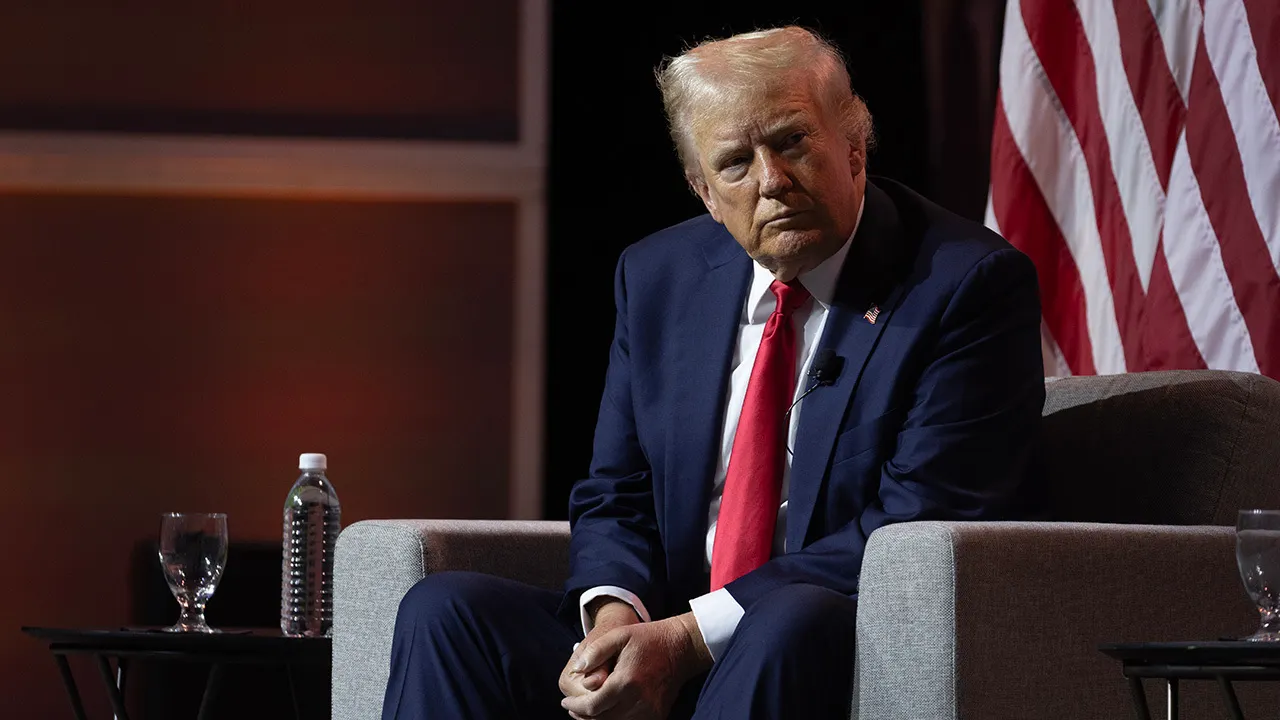
 Politics1 week ago
Politics1 week agoVance brands Harris a 'coward'; Trump dinged for 'attacks and insults' as campaigns war after fiery event
-

 News1 week ago
News1 week agoWe the People: Gun Rights : Throughline
-

 World1 week ago
World1 week agoThe Take: Is Silicon Valley going MAGA?
-

 News1 week ago
News1 week agoVideo: Biden and Harris Greet Americans Released From Russia
-
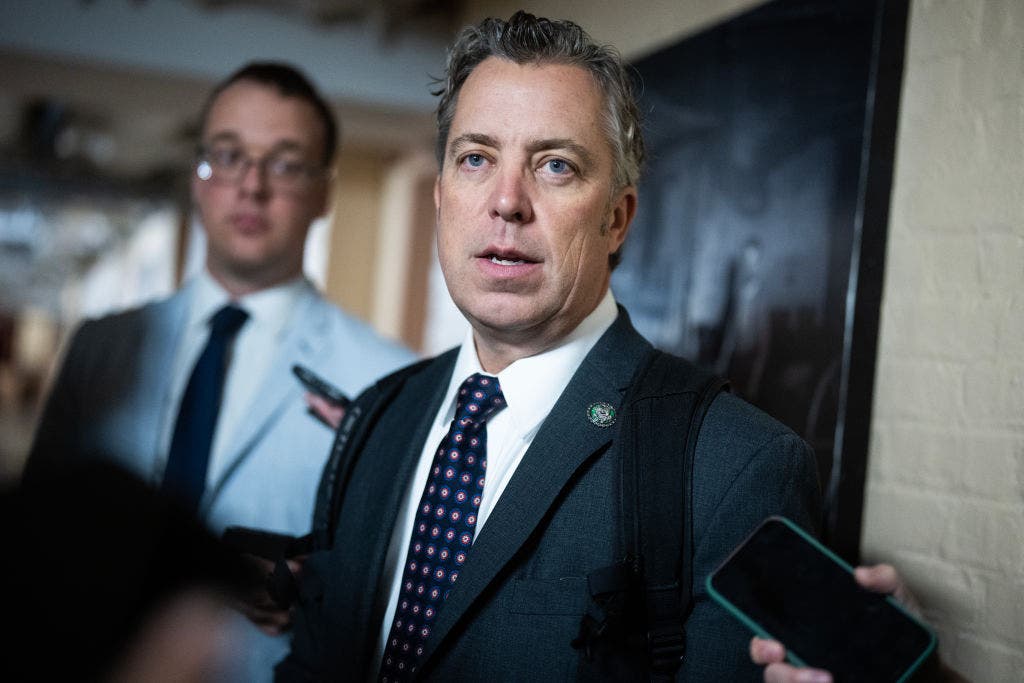
 Politics1 week ago
Politics1 week agoHouse conservative who's twice moved to impeach Vice President Harris faces competitive GOP primary
-

 World1 week ago
World1 week agoIsrael subjecting Palestinian detainees to torture and abuse: UN report


